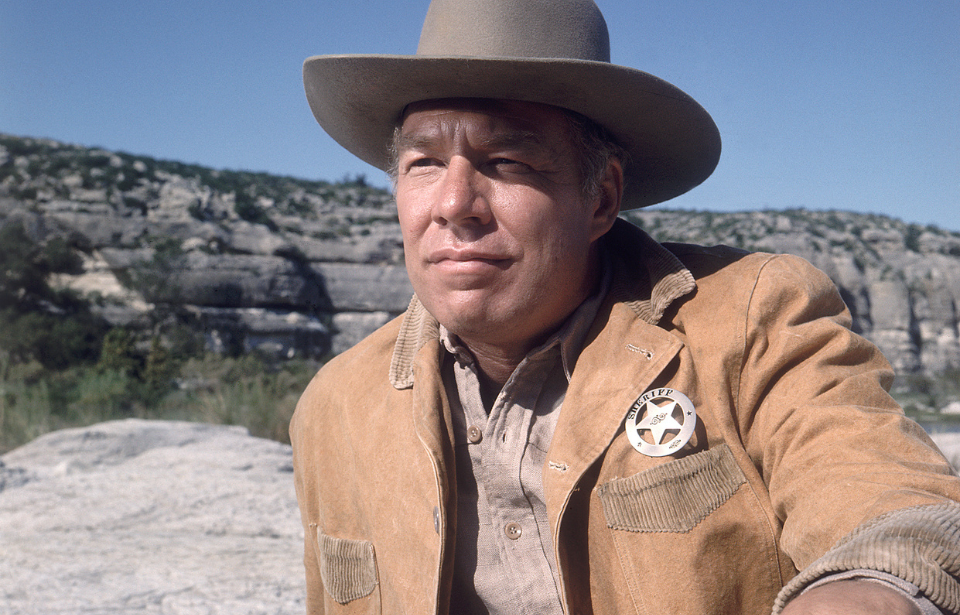George Kennedy’s commanding screen presence wasn’t just great acting—it was rooted in experience. Long before his breakout roles in films like Cool Hand Luke and Airport, Kennedy spent 16 years in the U.S. Army, where he steadily climbed the ranks and earned a reputation for leadership. His military future looked bright—until a back injury unexpectedly cut his service short.
Forced into early retirement, Kennedy faced an uncertain path. Yet what seemed like a setback may have been a turning point. Soon after, he found work as a technical advisor on military-themed productions, which led to bit parts—and eventually to major roles. It’s hard not to wonder: had he never been injured, would he have stayed in uniform for life? Or did that twist of fate clear the runway for a Hollywood legacy no one could’ve predicted?
George Kennedy’s early beginnings in show business
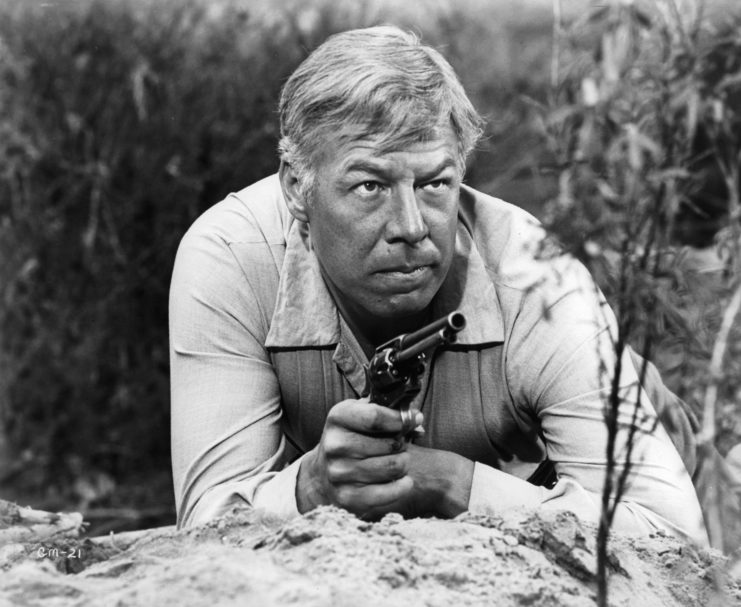
George Kennedy was born on February 18, 1925, in New York City, New York, into a family deeply connected to the entertainment world. His father was a musician and orchestra leader, and his mother had been a ballet dancer, so he was introduced to show business at a young age.
Kennedy made his stage debut at just two years old in a touring production of Bringing Up Father. Unfortunately, his father passed away when he was four, leaving his mother to raise him alone.
Even with this loss, Kennedy stayed focused on his growing career, performing on the radio from the age of seven until the start of World War II. After graduating high school, he decided to join the U.S. Army.
Serving under Gen. George Patton
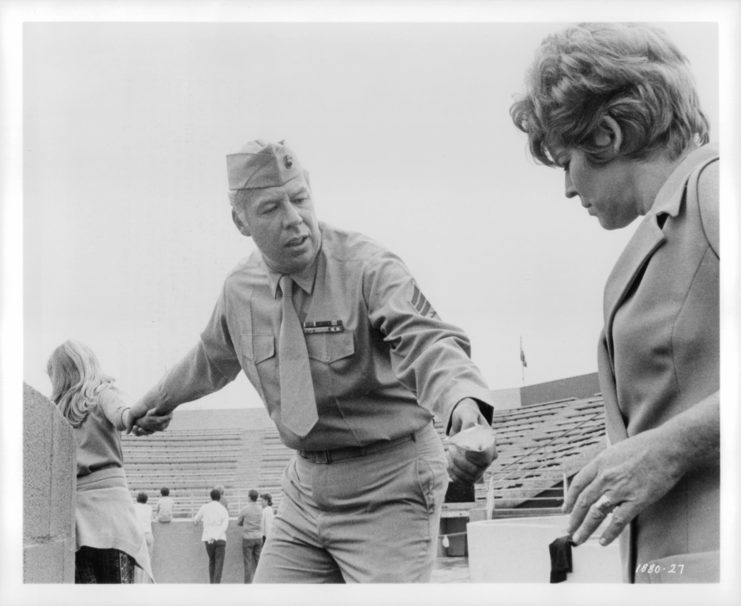
George Kennedy initially tried to enlist in the US Army Air Forces, but his physical stature posed problems.
“I’m six-foot-four, and even in those days I weighed 210 pound,” Kennedy once reminisced. “I was interested in airplanes then, and I’m interested in airplanes now. The best explanation came from a master sergeant in the Air Force. He said, ‘George, there’s nothing wrong with you. But we can either put you in an airplane or we can put a 200-pound bomb in an airplane. We’d rather put the bomb in the airplane.'”
Instead, Kennedy enlisted as an infantryman in the US Army, serving under Gen. George Patton, whom he’d later portray in 1978’s Brass Target. One of the most notable engagements he participated in was the Battle of the Bulge. Reflecting on the war later in life, he commented on the danger he and his fellow servicemen faced.
“Kids who had never done anything more dangerous than play kickball in the street were shooting BAR’s and mortars and killing each other… The war was one horrendous surprise after another. I can’t think of anything I did during the war that did not involve death,” he said.
Kennedy’s time with the military came to an end after 16 years due a back injury he suffered in the late 1950s. At the time of his retirement, he’d achieved the rank of captain and earned a number of recognitions, including two Bronze Stars.
Developing the US Army Information Office
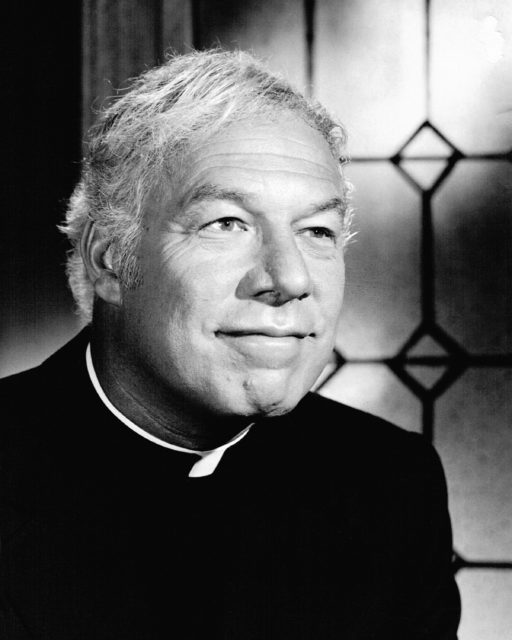
While in the Army, George Kennedy used his background as a radio actor to become a disc jockey for the Armed Forces Network (AFN), working in an environment similar to the one portrayed in the 1987 film Good Morning, Vietnam.
This job had a lasting impact on both the Army and Kennedy himself. For the military, it helped contribute to the creation of the US Army Information Office, which supported the entertainment industry with technical expertise. For Kennedy, it provided important experience that later helped shape his acting career after he left the service.
George Kennedy always played the tough guy
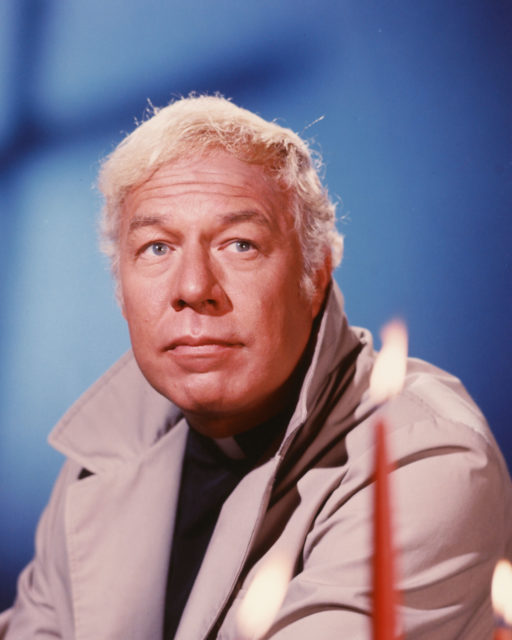
After leaving the Army, George Kennedy worked as a technical advisor on The Phil Silvers Show (1955–59). In this position, he occasionally played small, uncredited characters, sparking his interest in pursuing a professional acting career. This led to supporting roles in various television series, where he often played cowboys, outlaws, or lawmen.
Although Kennedy had made several TV appearances, his film debut came in the early 1960s. Among the notable films from his early career are Charade (1963), Flight of the Phoenix (1966) and The Dirty Dozen (1967). However, his breakthrough role came with Cool Hand Luke (1967), earning him an Academy Award for Best Supporting Actor. During this period, he acted alongside some of Hollywood’s biggest stars, including Paul Newman, Cary Grant, Kirk Douglas and Joan Crawford.
Kennedy appeared in over 200 movies and TV shows
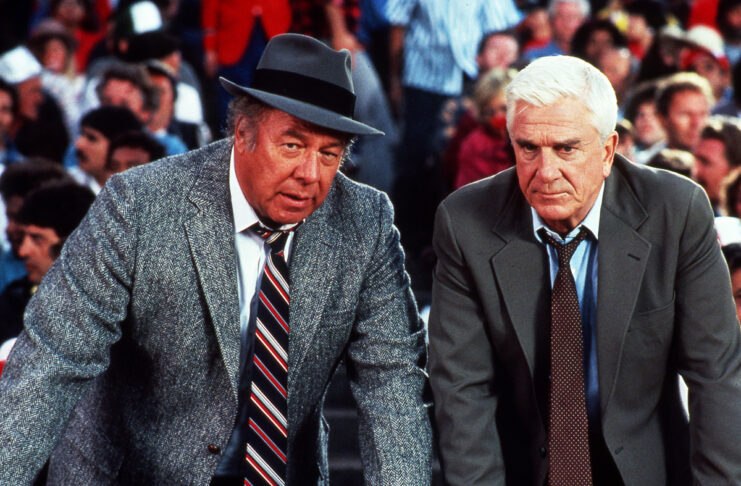
As the 1970s gave way to the 1980s, George Kennedy’s star power began to dim. Once a staple of major Hollywood productions, he found himself taking on smaller roles in lesser-known or low-budget films. To stay active in the industry, he pivoted toward television, appearing in a variety of supporting parts that kept his career afloat—if not exactly flourishing.
Then came The Naked Gun in 1988. Cast as the straight-faced Captain Ed Hocken opposite Leslie Nielsen’s bumbling Lt. Frank Drebin, Kennedy proved he had a sharp sense of comedic timing. The film’s unexpected success introduced him to a new generation of fans and gave his career a much-needed second wind.
Riding that momentum, Kennedy continued to work steadily into the 2000s, ultimately compiling more than 200 credits across film and television. His final appearance came in The Gambler (2014), after which he quietly stepped away from the spotlight. He passed away in 2016 at the age of 91, leaving behind a legacy defined by range, resilience, and reinvention.
